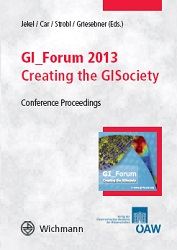
GI_Forum 2013, Volume 1, pp. 536-539, 2013/06/20
Creating the GISociety – Conference Proceedings

This work aimed to investigate the potential of remote sensing to provide information on the spatial distribution of habitats in the Alpine region. Specifically, the performances of different classification methods, namely Maximum Likelihood (ML), Decision Tree (DT) and Support Vector Machine (SVM) were investigated for land-cover mapping using multitemporal RapidEye data. Results showed that SVM (85 % overall accuracy) outperformed ML (80 % overall accuracy) and DT (79 % overall accuracy). The resulted land-cover classes were subsequently reclassified into habitat classes using a spatial kernel approach. Findings suggest that the inclusion of solar radiation layers in the classification procedure as well as the use of multi-temporal images improves the classification accuracy by 4 % and 10 %, respectively.